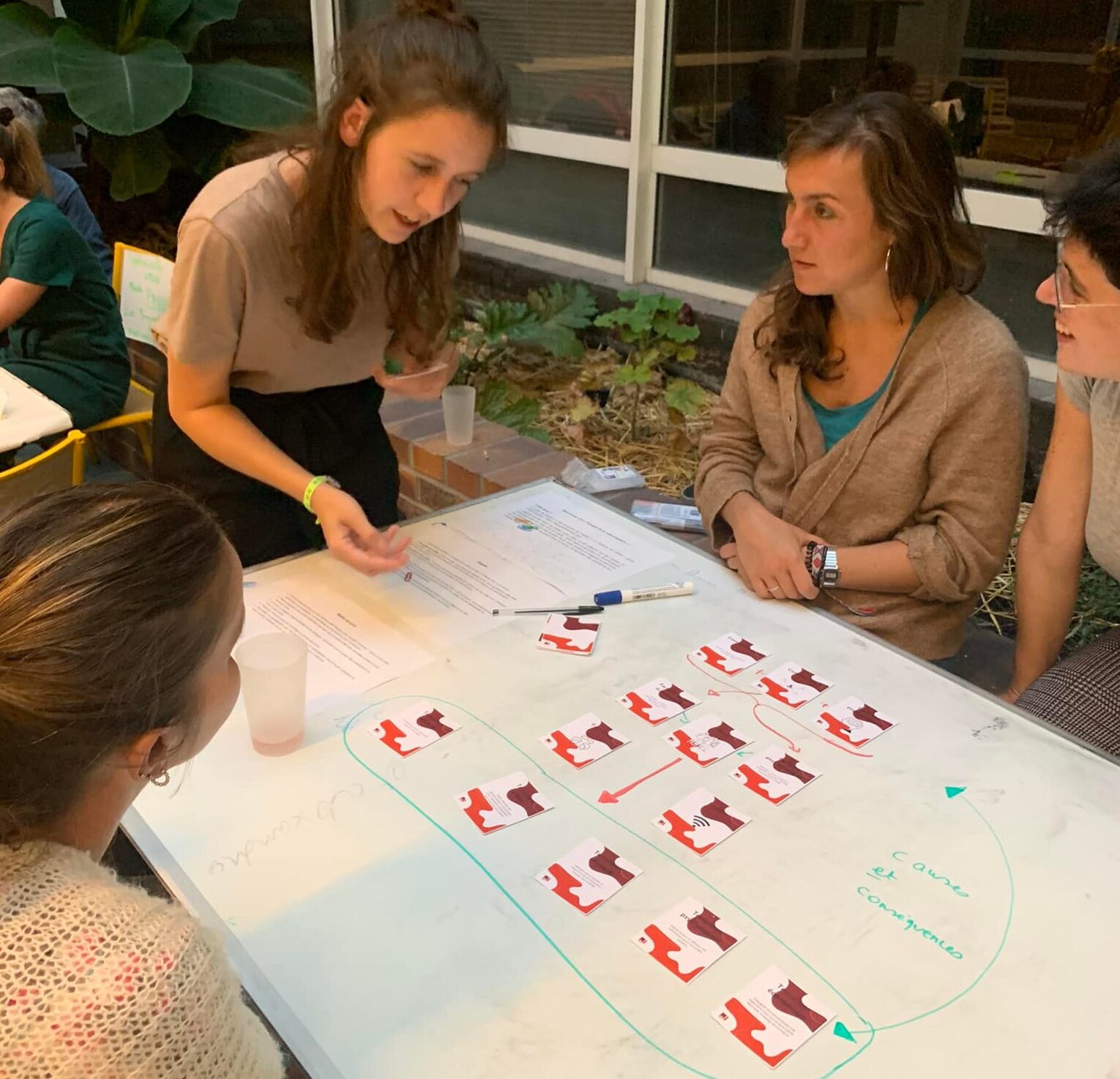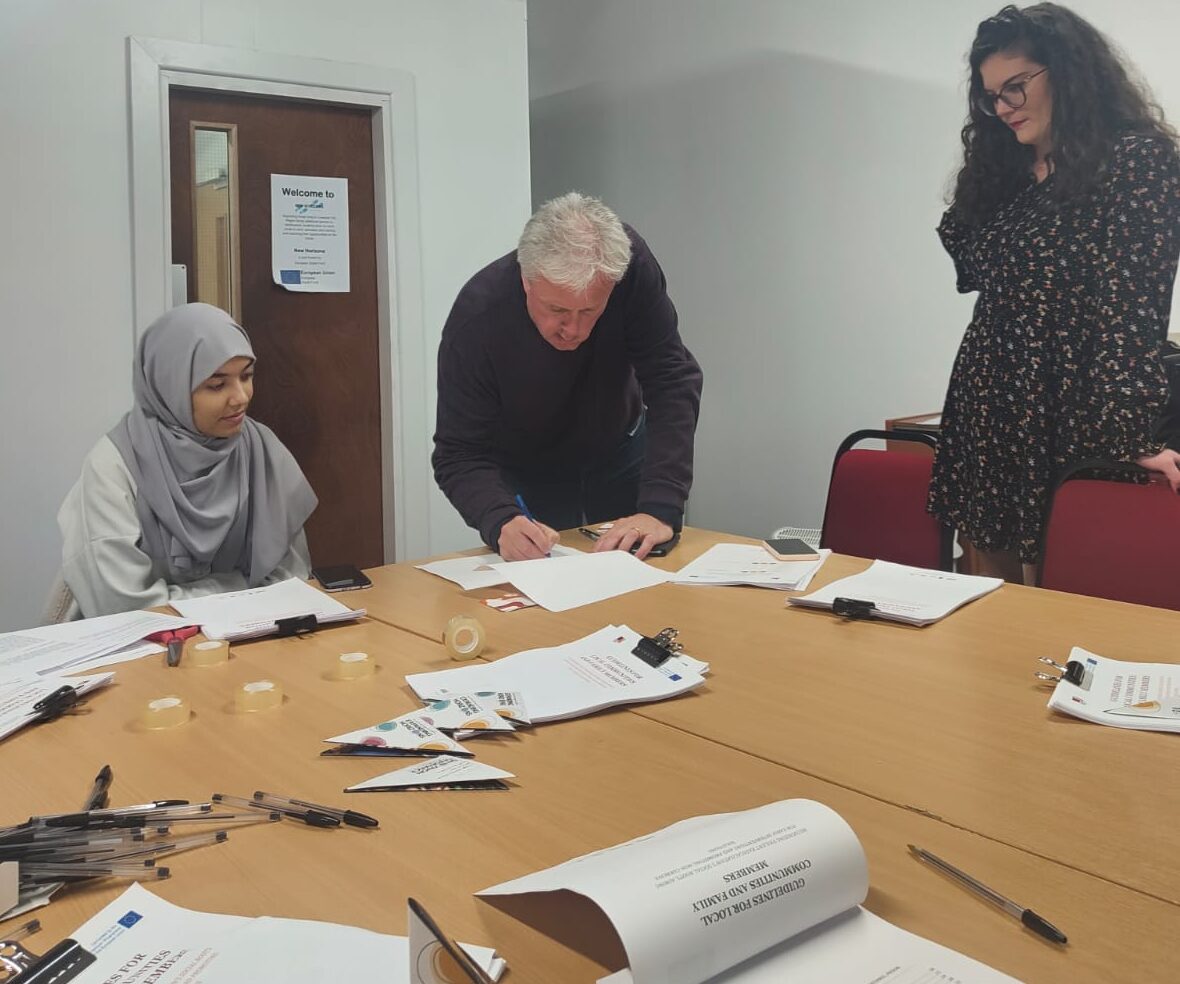After the publication of the EU Manual for Youth Workers, our project for the prevention of violent radicalization continues with the creation of a new paper for local communities and families.
The guidelines, which we had already discussed here, aim to:
- Empower families and community’s members by promoting dialogue, building trust and forming relationships between families and young people.
- Help families and community’s members to understand how much social links and positive relationships are necessary for the young person to feel a sense of hope and belonging.
- Help families to deal with other issues, including psychological challenges and mental illnesses.
- Offer useful tool to be used also by Police and local authorities to approach families.
- Learn to approach and handle controversial conversations.
- Provide a risk assessment tool.
- Share positive narratives.
The contents of this new manual are now ready and, to test their comprehensibility, usability and effectiveness with respect to the reference targets, each partner has organized a piloting session in their own country involving at least 10 people in this activity, for a total of 50 participants.
A participatory methodology: the RadArt cards
To conduct this test, Élan Interculturel – French partner of the project – has designed cards that summarize the key topics of the manual and stimulate the participants to express their thoughts and suggestions on the matter.
Then, each partner organized all the information gathered during the piloting and translated it into concrete actions to improve the final product, which will soon be available in the Resources/Output section of this website.
To show you an example of how we worked, we have ask our Partners to tell us about their experiences and we have collected them in this article.
Italy: the importance of translation
How did you do during the piloting?
«To test these new guidelines, Osservatorio di Genere organized a piloting with eleven people from different social contexts, with different ages, training and professional backgrounds. After presenting the manual and reading some key parts – especially relating to the Italian context – we led a discussion to understand the level of knowledge of the topic by the participants. After this introductory phase, we used the cards to facilitate brainstorming on the topic and create, all together, a mind-map to explain what violent radicalization is, how this phenomenon arises and what are the strategies to counter it. We also asked participants to add ideas, concepts and issues that they felt were not present in the manual».
What has come out?
«The most important output is related to the translation: in fact, in Italian, the word “radicalization” always acquires a negative connotation. We will therefore have to be very careful in translating the contents of the manual so that they are not misrepresented and that they maintain their effectiveness even in a different linguistic-cultural context».
(Giulia Rogante, trainer at Osservatorio di Genere)

France: three stops, let’s trait it in non-linear format
How did you do during the piloting?
In France we decided to carry out the piloting in non-linear format: we did an ‘’apero’’ where the participants find some snacks and some drinks, kind of non-formal atmosphere.
We decided to make three stops (an activity per each stop): the participants can choose to do or not to do the activity, if they like it, they stay, if not, they try another stop.
The first stop was the “Concepts Cards” table: the participants try to define some terms linked to the subject of radicalization, then they read the official definition that we chose.
The second stop was the table of “Radicalization Mural”, where partecipants can imagine together the possible paths of the consequences and results of the radicalization.
At the third stop, they could listen to some testimonies (positive narratives) about people who could change their radicalized lifestyle and return to non-radical life.
(Mena Yassa, trainer at Elan Interculturel)
What has come out?
From a theoretical point of view, a significant amount of interest from participants emerged from the evaluation forms. Indeed, the precisions of vocabulary and theoretical concepts allowed them a better understanding of the phenomenon and an invitation to further reflection on the subject. Also, the testimonies were a good way to concretize the theoretical contributions and provided keys for prevention.

United Kingdom: many cultures in comparison
How did you do during the piloting?
“Merseyside Expanding Horizons piloted the workshop with 10 young people of the community coming from different backgrounds, countries and social contexts. After doing a short icebreaker to warm up, we introduced the manual and the project to the participants. Following this introduction we invited them to read and reflect upon two case studies of people being driven into radicalisation. All participants shared their thoughts together and gave new ideas and solutions on how to deal with the radicalisation process. We then gave them the cards designed by the French partner of the project and translated in English by our team. We finished the workshop by creating together a timeline with arrows to connect the causes and consequences of the process of radicalisation.”
What has come out?
“For some it was the first time experiencing this kind of learning activity, so we had the opportunity to introduce them to non-formal education. Thanks to the workshop we could deconstruct some stereotypes and clichés associated with radicalism. It was interesting to compare different opinions and to see different timelines made with the same cards. In addition to this, we had the chance to have participants from different backgrounds and nationalities thus they shared with us how radicalism is seen and dealt with in their own countries.”

Poland
How did you do during the piloting?
“We began our piloting with a brief introduction to the project. Then, we watched a film called Binti, which tells the story of illegal Belgian immigrants, a father and daughter. The film is especially aimed at children and young people and is a great excuse to start a conversation about exclusion, intolerance, radicalization. After the film we took a short coffee break and then a practical activity. We showed on the big screen the photographic works of James Mollison, who traveled all over the world and created portraits of children and their rooms. One by one, the class participants tried to guess where the child came from and what his or her ordinary day looked like. The photos evoked different emotions. The exercise is meant to familiarize participants with cultural diversity.
Then we used an exercise with definitions taken from the Manual. Each participant uncovered a random card with a definition of some social phenomenon, for example, hate speech, stereotype, radicalization, then in their own words tried to tell how they understood the concept. Then, together we added our own associations. At the end, we uncovered the cards with the official definitions of the words and checked how much the definition coincided with partecipant’s understanding of it.”

The final product
After these activities, we finalized a new manual, with the following title: “Understanding the social roots of violent radicalisation of young people: guidelines for local communities and family members based on early interventions using non-coercive approaches”.
In the next weeks, the manual will be published in section “Resource / Output” of this website.






